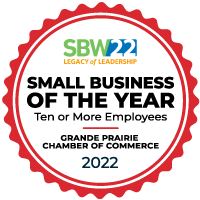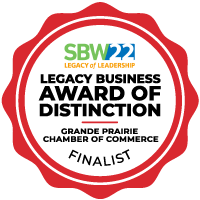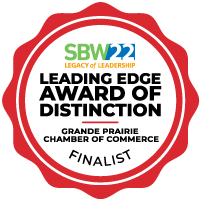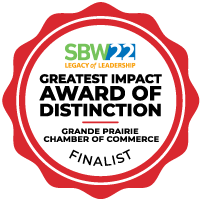As a marketing & advertising agency, we provide ongoing marketing & media management services to our clients in Grande Prairie & abroad. But we can also help clients with specific projects, such as redeveloping their website or re-branding their organization.
One of the questions we’re frequently asked is if it makes more sense to treat an engagement as a project or as a retainer. This article goes into the pros and cons of both arrangements, and which situation each is best suited for.
Key Differences of Retainers vs. Projects
Project
|
Retainer
|
When Projects Make Sense
Projects are best for performing one-time improvements to your business. Whether it is re-branding the company, building a website, developing a mobile app, or setting up your Facebook page, a project typically has clear deliverables, timelines and budgets.
In fact, even marketing services can be categorized as a project if we are talking about a single focused campaign to achieve a particular objective. For example, a 6 month campaign to build awareness of your new brand makes more sense as a project than a retainer.
Here’s some more details about the points in the table above…
The scope & services are well defined
The scope of the project and the services provided are very clear at the outset. A rebranding is an excellent example of a project – there is a certain list of things that need to be done, we both understand the services being provided, and the budget & timeline for completion is planned in advance.
Clear, short-term deliverables
The project has a list of deliverables that must be completed within a given timeframe and budget, and there are no questions about what needs to be done. Once the deliverables are produced, the project ends.
Shorter timeline (typically < 6 months)
If the engagement requires less than 6 months to complete, chances are it is a good candidate as a project. Even marketing/advertising services can be treated as a project when clients hire us to perform a single campaign for them over a set timeline.
One-time needs
If the work is completed and there is nothing further to do, then it’s best treated as a project. For example, the initial re-branding your company would be best treated as a project. Once it’s done there isn’t much more to do, and one would look at other services such as launching the brand with a campaign (which may be a project) or performing ongoing marketing (which would be better suited to a retainer.)
First-come, first-serve
Projects are scheduled on a first-come, first-serve basis, and are prioritized after the needs of our ongoing retainer clients. As a general rule, book your project as early as possible to ensure the shortest timelines. And once the project starts, make sure you are on the ball with responding to questions, approvals, payments and content requests, otherwise other projects may be put in line bumping yours back.
Budgetary considerations
The budget for a project may range widely, so it’s not a key factor in deciding whether a project or retainer makes sense. For example, a project to perform a single marketing campaign may have a very large budget when you include media costs. But a logo design for a small business will be typically much smaller. In either case, we offer monthly payment terms to make it easier on our client’s cash flow. The area where budget is a consideration is in retainers, which we’ll cover next.
When Retainers Make Sense
Retainers are ideal arrangements for getting ongoing support & making continual improvement to your business. A retainer makes the most sense when the services are ongoing, and it isn’t clear exactly what will need to be done at any given time. Ongoing marketing & advertising management services are a good example, where there is an overall goal but the way to get there isn’t clearly defined. However, retainers are not just limited to marketing. Some clients have a retainer with us just to be available to bounce ideas off of or get advice when they need it.
Here’s a breakdown of the key points from the table above:
Broad or unclear scope & services
Retainers are well-suited for “as needed”, ongoing, or exploratory projects. These projects may require any number of services and possibly any number of deliverables throughout the term.
Marketing services are a good example because developing advertising for an organization may involve all kinds of different mediums, skills, messages, timings and placements. It’s impossible to predict exactly what will happen and when before the project will start. Instead, both parties agree on a budget and objective, and it becomes our job to figure out exactly how we will achieve this objective throughout the term.
Broad range of services
Most retainer arrangements use a broad number of our capabilities and skills. Typically they will cross over from the world of digital to traditional, spanning design to programming to marketing strategy and media budget planning. When it’s hard to define the range of services that may be needed, a retainer makes the most sense because it normalizes the rates across all team members, making the budget more predictable and simpler to track.
Longer timeline (typically 6+ months)
Retainers are best for projects that involve ongoing service over a longer timeline. Typically the minimum timeline is 6 months, but most retainers are 1, 2 or 3 years in duration. This usually goes hand-in-hand performing with a broad range of services or deliverables.
Ongoing needs
When there isn’t a definite start and end to the project, a retainer makes more sense. Ongoing marketing & advertising management services are a perfect example. Another great example is when we are retained to provide “as needed” advice and consulting on branding, marketing, web & strategic issues. These have no planned timelines because they often pop up in response to emergencies or unplanned needs.
Needs prioritized over projects
Our primary focus as an agency is to develop more retainer business with our clients. Because our retainer clients are long-term and use more of our services, we prioritize their needs over projects that come in the door. This means quicker response times and a higher level of service for our retainer clients.
Budgetary considerations
Because of the nature of a retainer, budget is a key consideration in whether it makes sense. Because most retainers involve a large area of responsibility, wide scope of services, and many team members, the type of project that makes sense on a retainer is going to be fairly large by nature.
For example, to be effective with ongoing marketing services, we need access to a minimum yearly marketing budget of at least $100,000+. At any level lower than this, the budget will just be spread too thinly to make a significant impact.
Conclusion
We hope this article brings light to the difference between a project and retainer engagement, and where each makes the most sense. Of course, if you have any more questions, please contact our sales team for info!





